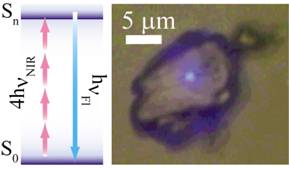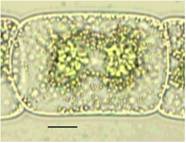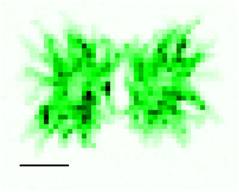
Fig. 1. Multiphoton (forth order) fluorescence from an anthracene microcrystal.
Near infrared 35 fs
laser microscope enables two-, three-, and four-photon fluorescence imaging
Matsuda Hirohisa and Miyasaka Hiroshi
(Graduate School of
Engineering Science and Center for Quantum Science and Technology under
Extreme Conditions)Journal of Physical Chemistry B 110, 1091-1094 (2005)
We have developed a femtosecond near-infrared laser microscope with a home-built cavity-dumped chromium: forsterite laser as an excitation light source oscillating at 1.26 mm of center wavelength. Optimization of the pulse duration achieved 35 fs fwhm at the sample position of the microscope through a 100× objective. This system permitted detection of the higher order multiphoton fluorescence of some organic microcrystals as shown in Fig. 1. The interferometric autocorrelation detection of the fluorescence and excitation intensity dependence of the fluorescent intensity clearly demonstrated that simultaneous higher order multiphotoon absorption processes are responsible for the production of the excited state for the microcrystals. The NIR multiphoton microscope is applicable to micro systems in the watery environment even though the oscillating wavelength overlaps the absorption due to the overtone of –OH stretching vibration in the NIR region as shown in Fig. 2.

Fig. 1. Multiphoton (forth order) fluorescence from an anthracene microcrystal.


Fig. 2. Transmitting and multiphoton fluorescence images of a part of Zygnema in water. Scale bar is 5 mm in length.